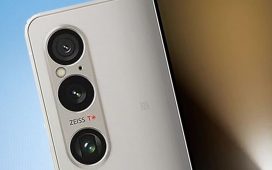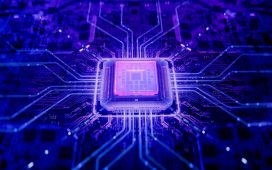With six bedrooms, two bathrooms, a gym and a 360° view, the International Space Station (ISS) would still be cheaper to rent than a one-bed in London.
Humanity’s high-tech home in the sky has seen more than 270 people from over 20 countries pop by since it entered Earth’s orbit in 1998.
Suni Williams and Butch Wilmore are the latest to call it home, though they never planned on doing so.
Wait, why were they sent up there in the first place?
Suni and Butch were only meant to do a drive-by visit to test-drive Boeing’s Starliner spacecraft in July. Eight days at most up in orbit and three back home.
NASA hired Boeing and SpaceX, founded by tech billionaire Elon Musk, to build replacements for its retired space shuttles, acting as a taxi service to and from the ISS.
Now the veteran astronauts may be stuck on the ISS until 2025 after the Starliner’s thrusters misbehaved and helium leaks were discovered while it docked.
Helium is used to push propellants to the spacecraft’s thrusters. If too much gas is lost, the thrusters may fail.
As the spacecraft docked the ISS, glitches in Starlight’s propulsion systems saw its thrusters behaving strangely. Starlight’s computers, which guided the craft, were able to get the ship docked safe and sound.
Scientists aren’t sure why this happened. To be safe, Suni and Butch have been told to make themselves at home on ISS as teams on the ground make sure that there are no malfunctions on the way back.
How will they get home?
Don’t worry, it’s not a question of ‘if’, NASA really wants to you know.
Agency and Boeing officials have repeatedly stressed that Suni and Butch aren’t stranded on the orbital outpost as engineers figure out what caused the malfunctions.
The Starliner is currently hooked to the Harmony module of the ISS. It has enough battery power to stay docked for about 45 days, so will run dry on July 21 according to predictions, though backup generators could keep it on for 72 days.
If they can’t return home on the Boeing Starlight before this, they’ll have to hitch a ride on a different spaceship.
But this is a long way off. The ride home wouldn’t be until February 2025 when a reconfigured SpaceX Crew Dragon swings by the ISS with new crew members.
How big is the ISS?
Just under the size of an American football field, so about 356 feet.
There’s an acre’s worth of solar panels and 13,696 cubic feet of habitable volume for crew members, not including visiting vehicles.
How high is it?
Not as high as you’d think, but still pretty high. It orbits the Earth at an altitude of 250 miles and can often be seen with the naked eye.
So what will Suni and Butch’s life be like on the ISS?
The ISS has been continuously occupied since 2000, according to NASA.
The space agency typically sends four astronauts to the space station every half a year to replace another crew who then return to Earth – two are needed at the least to keep the lights on.
Suni and Butch have a few things other than floating about to keep themselves occupied.
General upkeep of the ISS will likely take up a fair bit of their time, such as hours-long spacewalks, with a workday being about 16 hours long.
The ISS is a space laboratory, so many residents spend their days performing experiments, like seeing how their bodies are affected by radiation and the lack of gravity. Living in space basically turns them into living experiments.
That, or they’re getting out a guitar and singing David Bowie’s Space Oddity.
Some grow flowers, care for rodents or test gadgets like espresso machines and 3D printers to see if they work in zero gravity.
They can also email and call their family and friends and some even call into schools to do talks.
Space station crews can ask mission control to send them movies and TV shows to catch in case, we guess, they got bored watching the Earth below from their window.
How do they shower?
They don’t. But don’t worry, it doesn’t mean the astronauts stink.
Showering in space would be no cakewalk (or should that be spacewalk?). Without gravity in space, liquid floats around and forms sticky blobs.
Instead, astronauts wash themselves with clothes and use rinseless shampoo. If they want to shave or cut their hair, a vacuum is used to suck up all the floating strands.
Washing clothing is a no-go too, the Canadian Space Agency says. ISS residents are expected to wear their clothes until they’re too dirty to throw on again, given how scarce water is.
Wait, how do astronauts go to the toilet on the ISS?
That’s the question on most people’s minds. After all, the astronauts can’t exactly stop off at a petrol station to use the bathroom.
If they need the loo, they’ll have to use the ‘orbital outhouse’, as astronauts know it as. Toilets are located in the Zvezda, Nauka, and Tranquility units.
The 71cm tall toilet, snappily called the Universal Waste Management System, cost about £18,000,000 to develop.
Urine is flushed out with a hose and a funnel, while solid waste gets sucked by a small hole.
All the urine is collected and recycled – yep, the astronauts drink and wash themselves using recycled urine as well as sweat scraped off the ISS’ walls as condensation. NASA aims to recycle 98% of all used water on the ISS.
Where do astronauts on the ISS sleep?
Inside the ISS, there’s no such thing as up or down. Anything can be a floor or a wall – or a bed, for that matter.
Fleeting visitors tend to either sleep in their shuttles or any sparse bit of floor/wall, depending on how you look at it.
There are six sleeping quarters in the ISS, according to NASA’s brochure for the station.
Where Suni and Buitch are sleeping are some bunk beds down in the Harmony module, where off-worlders have to tie themselves to the wall or restrain their bodies in sleeping bags.
Eye masks and earplugs are provided as the humming of the life-support system and the intense light from the sun can make it a tad hard to doze off.
What do people on the ISS eat?
Space cuisine isn’t always squeezed, puréed and crammed into toothpaste tubes.
These days, it includes fresh fruit and vegetables, tinned meats, espressos and a lot of tortillas, given astronauts can cram food in them to stop them from floating.
Health is key, with most food on the menu being what an athlete could nibble on – think things low in sodium, sugar and fat. Alcohol is banned – any pre-made dishes that use it are thrown into a spinning evaporator to get rid of the alcohol without removing the flavour.
Since there is no hob or microwave on the space station, most of the food has already been cooked, and then freeze-dried and vacuum-packed.
They do, however, have a forced-air convection oven to heat dishes. This also sterilises them in a process called thermostabilization – but does bizarrely see astronauts popping cakes into the oven, cranking it up to 140°C and leaving it in for an hour.
The food is also never crumbly or flakey, as the crumbs can easily drift away and clog up machinery.
Speaking of drifting away, if the astronauts want to pretend they’re at a restaurant or eating in their dining rooms, they can stick their food onto the table using magnets. As the workers eat their meals inside the Unity module, they have to strap themselves down to their chairs.
And whatever the astronauts bring themselves or officials send up from time to time is all that’s on the menu. There’s no Deliveroo or Tesco in space.
Does the ISS have a gym?
Astronauts need to stay fit and healthy while they’re hundreds of miles up in the air, drifting in the endless void of space.
So to stay healthy – and stave off existential crises – the ISS has three pieces of exercise equipment in the Tranqulity node.
Crew members must do two hours of exercise a day as the lack of gravity means their bodies can weaken over time as muscles thin and bones soften.
The machines range from special treadmills and weightless weightlifting systems, often using pistons, elastic bands and flywheels to get astronaut’s bodies moving, NASA says.
Suni and Butch have even been spotted trying out for the Olympics by doing some weightlifting – though the complete lack of gravity may disqualify them, we think.
Get in touch with our news team by emailing us at webnews@metro.co.uk.
For more stories like this, check our news page.
MORE : US and Canada wildfires map shows where blazes are raging
MORE : Asteroid bigger than the Eiffel Tower will skim Earth ten times closer than the Moon
MORE : Underground moon cave could be ‘future base for astronauts’
Get your need-to-know
latest news, feel-good stories, analysis and more
This site is protected by reCAPTCHA and the Google Privacy Policy and Terms of Service apply.





















